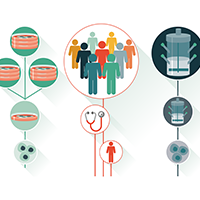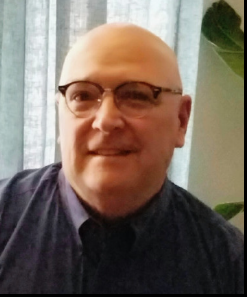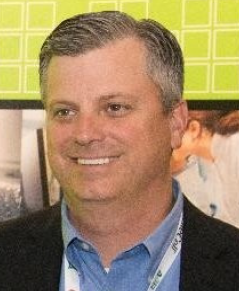The Critical Role of Testing to Ensure Product Quality
Cell Gene Therapy Insights 2018; 4(8), 829-835.
10.18609/cgti.2018.074
Could you provide some background information on the recent acquisition of Labs Inc, by Eurofins and what impact this will have on the service offering?
VRL Eurofins’ recent acquisition of LABS Inc. combines two robust transplant testing laboratories, providing the opportunity to optimise our services, to expand their reach and impact, and to get closer to our end-users in the US – namely, organisations that require rapid transplant and product testing.
It represents an integration of both missions: to serve the transplant and biomedical communities with on-time delivery of results and a consultative approach.
From donor recovery to transplantation of cellular therapies, what type of testing should companies plan for to mitigate risk and ensure safe and efficacious products?
Each company needs to consider the type of product they’re testing, the country they’re testing it in, and also any specific regulatory requirements around the transplantation itself, whether it be cell, tissue or organ. It’s vitally important to have a clear understanding of the precise regulatory framework concerning a given product – that’s step 1. We then consult with the client to ensure that those regulations are followed from start to finish – that there is no risk to the recipient or to the product itself.
How big a role do laboratory partners play in the process? What are the benefits of using one laboratory to test samples rather than several diverse labs?
As a consultative laboratory, we have the ability to sit down with each customer and analyze the very specific targeting and outcomes of their product.
We can then customize everything: from sample logistics, the very start of testing through routine product testing, and the reporting of results. We strive to make sure each and every customer feels that they have received the benefit of that consultative approach, whether we’re talking about just a standard, routine test or something more complex.
We have 3 major departments in our laboratory: infectious disease screening of donors for transplantation, microbiological testing for cells, tissues and patients prior to transplant, and immunogenetics. This results in a unique ability to offer a one-stop-shop. And if it transpires that we cannot fulfil the testing in any given situation, we know that another member of the Eurofins family will be able to do so. What this means in practical, logistical terms is that if you’re working on a product that involves several different testing elements, the client doesn’t need to send out to 5 different laboratories. It can all come to Eurofins and be managed as one piece – a single source and repository of sample testing information.
At what stage in development of a new therapy would you recommend companies start a partnership with a testing laboratory?
Ideally, at the very beginning, just in case there are assay development needs to be identified or addressed at an early stage.
Assay development can take quite a while and it’s very specific to a certain type of sample or process. This approach allows us to set the right examples from the beginning for the cellular therapy, or for the donation and transplantation of tissues.
We can then better understand that product’s needs as it continues to advance through the phases of development – to be able to quickly address any changes that need to be made either with the product, or with the organization involved. If you are coming in at a later stage, then it’s really hard to get caught up with where that product needs to be, how it needs to be developed and tested. Not all products are the same and this is especially true of cellular therapies. Given the fact we adopt such a consultative, product-specific approach, it’s important to walk the length of the development pathway.
How important is regulatory compliance with respect to cell therapy testing, and how do you keep up to date with regulatory standards form around the world with global customers?
One of the things that VRL Eurofins and the Eurofins family of laboratories focus on strongly is to stay very engaged with our regulatory bodies here in the USA.
It’s really important to stay up to date on the new and changing facets in cell therapy, which is such a rapidly evolving field in regulatory terms. So we consult with both current and former FDA employees to ensure we are prepared for any type of product and any type of regulation. They’re a really great resource to tap into, especially when we’re looking to expand into relatively new regulatory areas.
We focus in the main on tissue- and cell-based regulations. We look to those bodies that oversee those areas, in both the USA and globally, to keep updated on new elements coming through the pipeline. Altogether, we are audited by over 50 organisations during the year spanning the United States, Europe and Australia.
We also attend and support trade organization annual meetings to understand what’s coming down the pipe for new requirements and specifictesting needs of each organisation. Between this, the audits, our consulting with the FDA, our following of the CDC on new diseases and transmissions coming out… all of these pieces come together to make sure we have a really thorough global picture of any and all relevant changes being made in the cell therapy space.
How do you stay up to date with the most relevant testing methods given how quickly the industry is changing?
It’s interesting when one looks at the regulated testing that’s happening today: things are changing very quickly in the cell therapy industry as a whole, but the assays themselves haven’t changed as much to date.
We therefore maintain a very close relationship with all our major suppliers in order to stay in line with what’s in the assay pipeline, what might be coming through next to change this picture.
We stay in line with our kit manufactures as they release new instrumentation or assays in order to stay at the top of our game when it comes to all the new requirements and testing that comes out.
Again, we use our attendance at major conferences to listen to the concerns of the community, to gauge their interest in new testing options and needs, and to discover from the technology suppliers what they’re able to do to address them. We combine all of this information with our insight into what’s happening on the regulatory side.
In terms of emerging requirements, there are new diseases appearing all the time that we don’t necessarily need to immediately test for with our type of transplantation therapies, but we do need to stay abreast of them. Zika, West Nile virus…then you start looking at some of today’s emerging bugs like Strongyloides stercoralis and Trypansoma cruzi for example…there are so many potential tests to conduct. We can work with our assay suppliers to make them more robust for routine testing, and we keep an ear to the ground not just for simply when they’re going to be required, but when that time comes, what the impact will be on the actual pool of donations and recipients, as well as the organisations responsible for testing both.
We also have a Medical Advisory Board, which keeps us up-to-date with what’s going on in the world of the WHO with regard to the transplantation of cells and cell therapy. They’re always a massive help in enabling us to keep at the forefront of what is being released.
And finally, we perform assay development with our kit manufactures. They will generally come to us for help because we’re so unique in the type of screening and testing we do for infectious diseases, as well as our other microbiological, sterility or immunogenetics departments. This is invaluable in enabling development of assays that can be focused solely on cellular therapies, or only on the donations of organs, tissues and cells.
How do you deal with the atypical testing requirements that may come up?
Any time there’s an atypical testing requirement, we have testing that is completed for routine donors with routine regulations that follow a very easy path.
However, we do also receive some atypical requests – from different countries who are testing under their own requirements, for example, or where requests are atypical for a given product line. In those instances, we would definitely consult with the organization that is requesting it. We would look at whether it would be something we should bring into our own laboratory in order to be able to test ourselves, or if we are able to source that test within our wider family of Eurofins laboratories. The key there is obviously to ensure we continue to provide bundle testing for the given customer.
We do get a lot of atypical requests. Often, it’s just for one test. Generally, we’re able to locate it within our network of Eurofins laboratories to ensure the customer has the quality testing they have come to rely on from VRL Eurofins.
What are the critical elements for sample transplantation, and what are some of the most time sensitive tests, and what turnaround times are targeted?
Starting with logistics, we have made sure the transportation of any cells, any samples for testing, is very robust – whether from the United States or globally.We have a very large menu of validated shippers to choose from worldwide.
These validated shippers ensure that the sample type and the panel of tests that need to be performed on it in order to be able to release the product for transplantation all fall under the correct specimen requirements. We can also obtain pinpoint accurate data from them on the amount of refrigeration time before a given sample reaches our laboratories, for instance.
Next, we focus on consulting with the client to understand their specific testing needs, their sample type and from that testing, what kind of specimen requirements there are and what turnaround is needed.
We follow IATA andISTA 7D protocols for everything relating to transportation and we work with the customer’s logistics team to ensure that they are comfortable following them. Of course, many of these organisations already have global logistics teams in place, so we sit down with them and help identify the correct shippers and carriers that would be the best for a given that country and its customs environment – all to ensure expedited arrival times at our laboratories. We also work with the customs organizations themselves to make sure nothing is going to get delayed – the last thing we need is have a very precious sample tied up in customs, which then can’t be tested upon its release because it’s outdated. We work very closely indeed with those groups and the logistics teams to make sure that doesn’t happen.
We then do a dry run of logistics prior to starting the testing for a given organization. For example, we just engaged with a group from South Africa, for whom we did several dry runs with their products and packaging to ensure it got to us through customs, and that the delivery time was as anticipated and required. So we do those dry runs prior to starting the testing itself just to ensure there are no issues – and if there are we can address them then and there.
It’s then on to the testing, much of which depends on the individual product: some of our testing is very time- or temperature-sensitive, for instance. We take all such things into account as we look at the suite of testing performed for a given organization and donation. Once again, it all comes back to our consultative approach – to sitting down with a customer and really grasping the depth of need from start to finish for their product. VRL Eurofins fully understands the desire and need to be able to move that product forward – and that we own responsibility for an element which ultimately dictates whether it will or not.
Affiliations
Kevin Barfield, MT(AMT)
President, VRL-Eurofins
Sara Dionne, PhD, D(ABHI)
Senior Laboratory Director, VRL-Eurofins
Ronnie Aga
Executive Director, VRL-Eurofins

This work is licensed under a Creative Commons Attribution- NonCommercial – NoDerivatives 4.0 International License.




